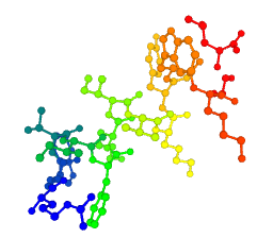

Novel Antiviral Therapy for H5N1 Influenza
A University of Pittsburgh researcher has developed a novel antiviral peptide that can target H5N1 avian influenza viruses. Developed using rational design, this antiviral peptide, Ac-RWVIFKIVKYWKGL-NH2, binds strongly to hemagglutinin (HA) proteins in multiple clades of H5N1 influenza viruses. Following chemical modification this peptide has been optimized for intranasal or aerosol-based delivery and could be a broad-spectrum treatment strategy against the potential pandemic threat of H5N1 influenza viruses for humans and animals.

Description
Highly pathogenic Avian influenza (HPAI) H5N1 viruses have caused the deaths of hundreds of millions of wild, commercial, and domestic birds globally and poses a growing threat to food insecurity and public health. Spillover from birds to other species including humans, cats, cattle, and sea mammals has been reported. To date, no sustained human-to-human transmission has been reported, but human deaths have occurred and H5N1 has a high mortality rate in confirmed human infections. Currently the global public health risk posed by H5N1 remains low; however, concern exists among many virologists and public health organizations that H5N1 has human pandemic potential. Developing safe and effective therapies for evolving and emerging clades of H5N1 viruses that can be rapidly deployed are vital in pandemics preparedness against emerging threats. These novel antiviral peptides can be formulated for use in animal feed or nasal spray delivery and could treat the current outbreaks of H5N1 in animals and be a vital tool in the fight against any future H5N1 human pandemic.Applications
• Pandemic preparedness• Treatment for H5N1 infection in humans and animals
Advantages
Currently no vaccination against H5N1 or specific H5N1 treatments exists. While small molecule antivirals targeting neuraminidase (NA) proteins are widely used to treat humans with H5N1 infections, these antiviral molecules are subject to drug resistance and high costs, limiting their usefulness in a pandemic.Antiviral peptides do not contribute to antimicrobial resistance, are biodegradable, scalable, and cost-effective. This first-in-class peptide, designed using structural bioinformatics and molecular docking studies to target a conserved site on H5 haemagglutinin (HA), blocks viral entry to cells and can target multiple H5N1 clades. Additionally, these peptides have been optimized to increase stability and can be formulated for non-invasive delivery (e.g., nasal spray or feed) and could be used either prophylactically or therapeutically in humans and animals.
Invention Readiness
Using rational design, a peptide sequence that was enriched in residues selected for membrane penetration and HA interaction, attraction, and binding was identified. This sequence was refined to maximize binding and stability resulted in the final design Ac-RWVIFKIVKYWKGL-NH₂. In silico studies confirmed the peptide binds directly to the receptor binding domain of H5 HA. Following peptide synthesis, in vitro experiments confirmed the peptide could neutralize pseudoviruses of clades 2.2 and 2.3.44b H5N1 viruses inhibiting viral entry. Further testing and formulation optimization is required.IP Status
Patent PendingRelated Publication(s)
Chothe, S. K., Srinivas, S., Misra, S., Nallipogu, N. C., Gilbride, E., LaBella, L., Mukherjee, S., Gauthier, C. H., Pecoraro, H. L., Webb, B. T., Pipas, J. M., Ramasamy, S., & Kuchipudi, S. V. (2024). Marked Neurotropism and Potential Adaptation of H5N1 Clade 2.3.4.4.b Virus in Naturally Infected Domestic Cats. Emerging Microbes & Infections. https://doi.org/10.1080/22221751.2024.2440498